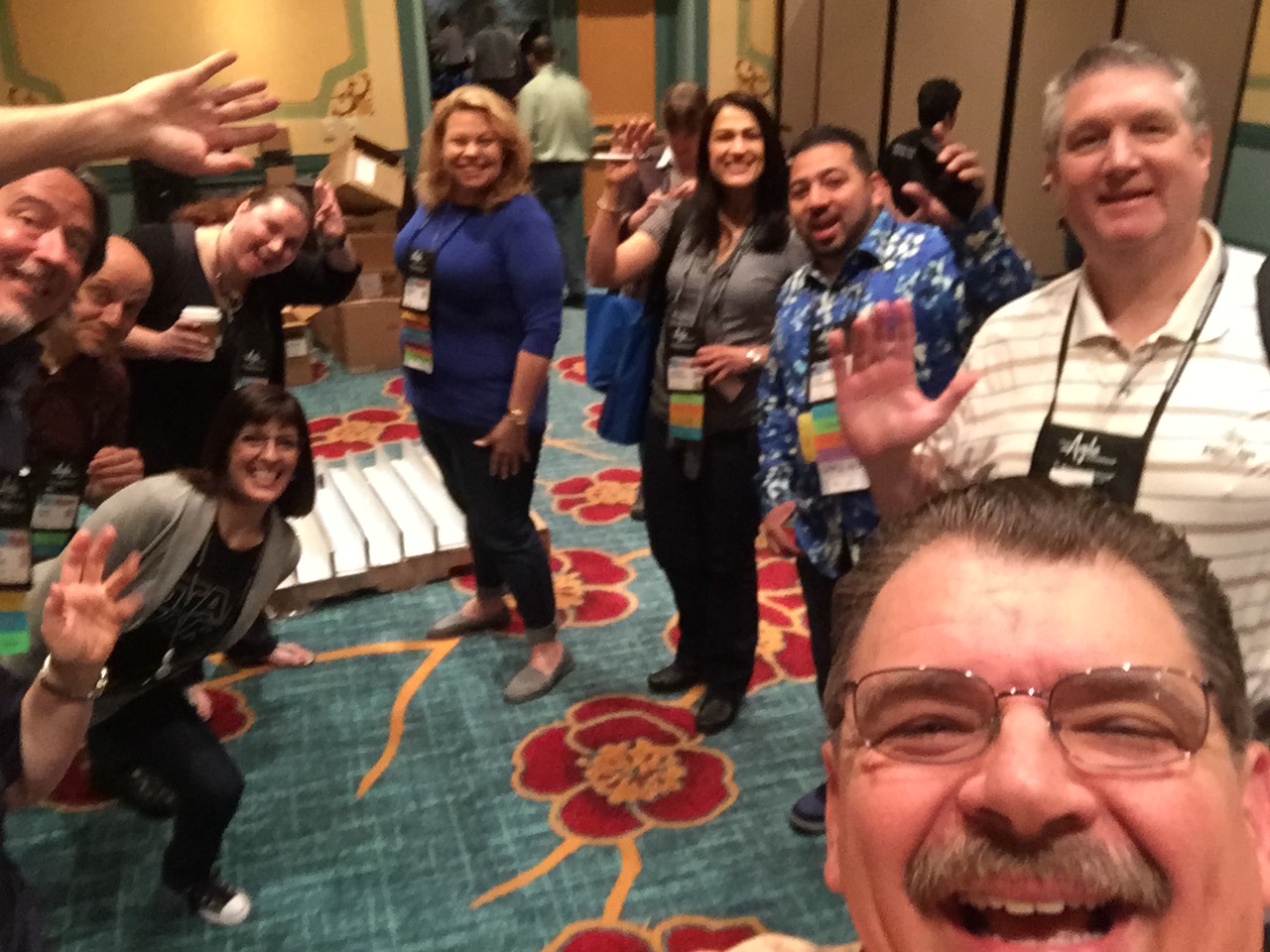In my prior blog post, I mentioned how we formed our group of volunteers for the Global Scrum Gathering in Orlando. Now let me share how we stormed, normed and performed at the gathering! Warning: this may be a bit long (TL;DR) unless you are interested in how we rapidly evolved this distributed team.

Furthering the Forming
I wanted the volunteers to be able to build a strong support network. Some of the Orlando and Tampa folks knew each other, but many had never worked together. Also, we had some folks joining us through Scrum Alliance that had no prior contact with Agile Florida. I wanted them to have the opportunity to stay connected with us after the gathering if they made connections with us.
An obvious way for our volunteers to get to know each other was through Slack. We had started our own Agile Florida Slack community in October 2015. It was already showing great promise in connecting agilists across the state of Florida. We had gathered close to 70 people on the community by November and were seeing some great conversations on key topics. Could we use it to form our team of volunteers?
Storming and Norming Quickly
Taking a tip from Bob Galen on being more prescriptive in my coaching, I set some “ground rules” for the team:
- Everyone needed to be in Agile Florida Slack and in our private #sgfla-volunteers channel shared with Scrum Alliance staff and our gathering chairs, Kate and Anu.
- Everyone had a choice of sessions (via an easy-to-access Typeform I designed), but we made no promises that they would get all their sessions.
- Their first duty was to help the speakers and monitor the room. Monitoring a session they wanted to participate in would likely be difficult (caveat monitor).
Why give them a choice if we could not guarantee they would get their assignment? In terms of Dan Pink’s book Drive, the volunteers already had a clear purpose in what they needed to accomplish and they would gain mastery from attending the gathering. Yet they also needed some autonomy in their work. I did promise the volunteers they would get at least one session they requested and keep them to one room change to not complicate things for them. Also, once the initial schedule was set, I allowed them a week to negotiate room changes via our #sgfla-volunteers channel on Slack. As they studied the schedule and negotiated, they began to learn more about their fellow volunteers. However, their conversations went far beyond negotiations. As excitement built, they looked for ways to coordinate rides and meeting each other at the gathering.

Performing Brilliantly
As we approached the gathering, I shared additional reminders on their role, when and where we would me meet at the beginning and end of each day, and how they could request additional help via Slack. I took the first day as the “runner” for supplies and other needs. Becky Hartman took the second day as runner even though she volunteered as room monitor on the first day. However, even the volunteers themselves helped each other via Slack. While some worked Monday and others on Tuesday, they would still lend a hand to room monitors on their “off day” if they were attending a session. Slack became a valuable way to coordinate without disturbing speakers or participants. Slack became our “team room” for this distributed group of volunteers.
As this was the first time the Scrum Alliance had used volunteers for room monitors, I quickly set up a “retro channel” on the first day so the volunteer room monitors could capture ideas in the moment. We also reflected at the end of each day so we could give feedback the following day. The last morning provided feedback directly to the gathering chairs, Kate and Anu. The different ways of gathering feedback allowed us to quickly react and gather valuable lessons, which I documented for the Scrum Alliance after the event.

Over a week later, these same volunteers are collaborating on blog posts and sharing ideas they learned from the gathering. May the collaboration continue far beyond! It is my hope that these notes and the related documents will help volunteer organizers for other gatherings and similar events in the future.
I would like to thank:
- Kate Megaw – co-chair of the Global Scrum Gathering Orlando for asking me to organize our volunteers
- Anu Smalley – for your encouragement via email and Slack; Also, thanks for pitching my topic on distributed teams in open space on the last day while I was volunteering once again
- Becky Hartman – my co-leader and always “fierce but flexible”; I think you may have over-volunteered for this one and I owe you
- my AgileOrlando volunteers
- Sarah Baca – you are always there to help (thank you)
- Lakshmi Ramaseshan – if there was a more enthusiastic volunteer, I could not think of one
-
Kristi Heredia – always the wizard behind the curtain
- my Tampa Bay Agile volunteers – whom I now know a little better and am grateful
- and my Scrum Alliance volunteers
-
Nicole Fleming
-
Lee Allison – last but not least, you are ALWAYS welcome in Florida
-
- Finally, I would like to thank the good folks at Scrum Alliance that put up with some of my crazy ideas and allowed us to experiment with things:
You all rock!

Member discussion: